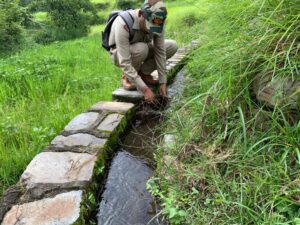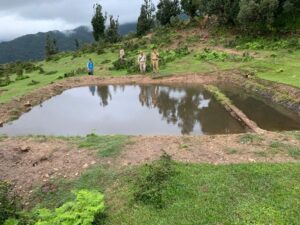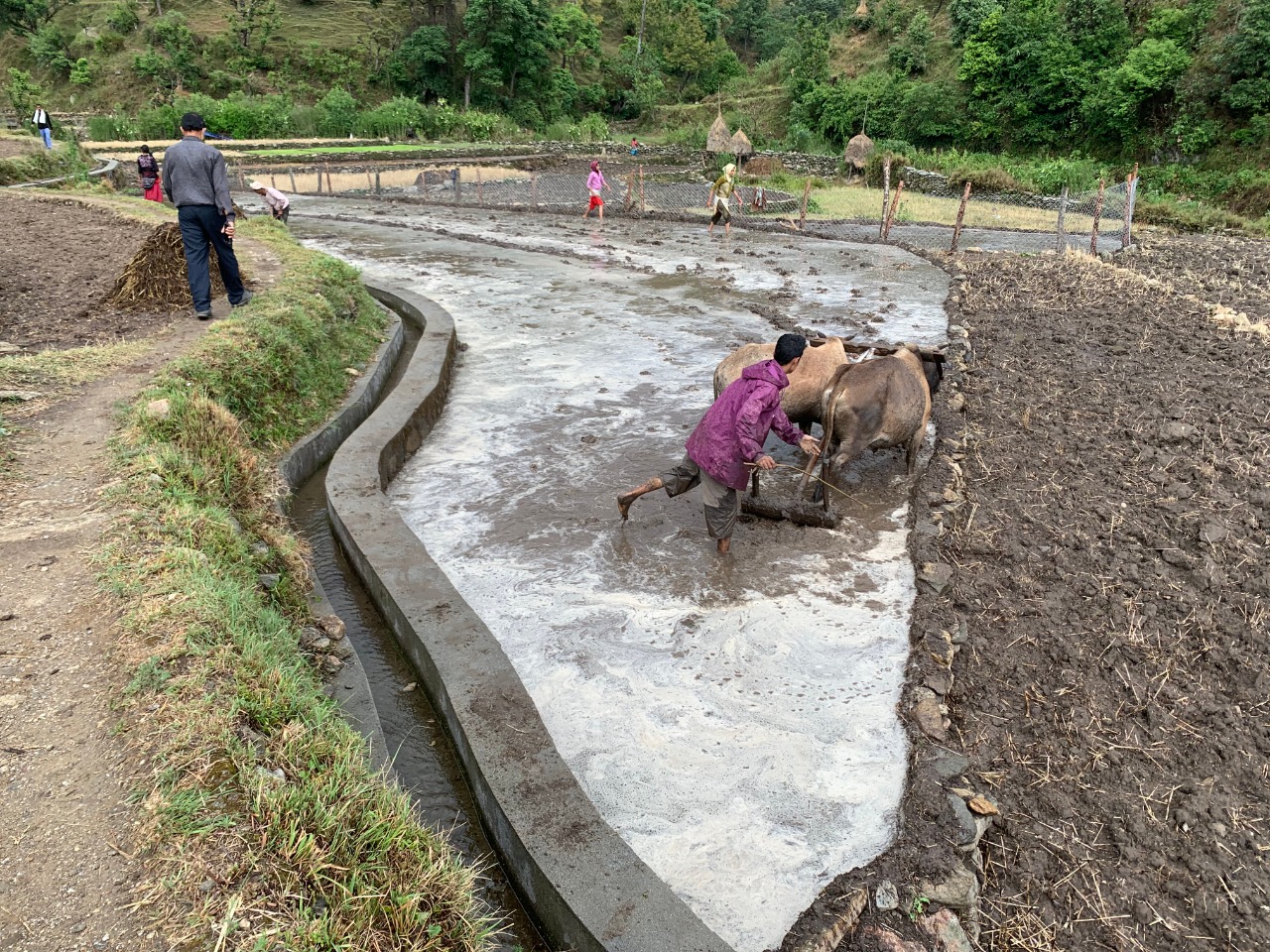MICRO-WATERSHED
The Micro-watershed should be the smallest unit for work, when planning development projects in mountainous locations. Priority tasks include expanding the area covered by forests, conserving soil and water, and giving locals access to resources for alternative employment. The catchment area will have more water available if these projects are implemented successfully, which would help agriculture.
The UFRMP project aims to eco-restorate and increase local residents’ income through soil and water conservation. It is decided to use Perennial Water Sources continuously throughout the year and revive irrigation channels that are currently not used due to lack of water. This will increase the irrigated agricultural area and income for local residents.
To achieve this objective, Micro watershed areas should be identified, including perennial water sources and past irrigation channels, and remedial works should be performed in these areas to revive these channels.
OBJECTIVES
Basis of proposals special in selected micro watersheds under the project, main objectives of soil and water conservation work are as follows:-
Optimum utilization of the water flowing in the drains/water bodies in which there is water throughout the year (Perennial Drain), which is otherwise not being used, under the selected micro watersheds.
Controlling soil erosion in the area by treating the catchment area of the selected drain and trying to increase the flowing water by recharging the water source of the drain to do.
To try to revive the previously constructed gul’s in the village located in the catchment area of the drain, which are currently not being used due to the expected availability of water.
To increase the Moisture Regime of the area by increasing Percolation by reducing run-off in the catchment area.

TREATMENT WORKS
Taking cognizance of the grounds presented for the treatment of stream or nala, after the survey of the area, the following treatment works are being proposed:-
Eco Restoration Work:
Water availability in micro watersheds/drains is primarily influenced by the condition of forest cover in the catchment area. Good forest cover is crucial for maintaining water availability. In cases of forest cover shortages, eco-restoration or plantation work is implemented as a primary treatment measure, ensuring the catchment area’s health.
Water conservation and use:
The perennial stream catchment area is being surveyed for soil and water conservation. Various structures are proposed to control soil erosion, with the stream’s width decreasing near the origin and increasing as it moves downstream. The stream is the feeder stream of the main river. Top to Bottom Approach structures are constructed in first and second order drains, with Gully Plug and RR dry respectively. Along the stream, Pakka check dam construction was done under the crate wire check dam’s protection, Whereas Chaal-khaal construction is also proposed to increase moisture regime and reduce rainwater run-off, thereby enhancing percolation/infilitation.
Villagers proposed treating perennial streams to reduce run-off and increase percolation/infiltration, leading to increased water availability in drains. They also suggested using water streams to revive previously constructed gull’s for irrigation, allowing profitable agriculture in barren or previously irrigated land. This would increase the moisture regime in the area and allow for the revival of previously constructed gull’s for irrigation. This would help revive barren or un-irrigated agricultural land.
Roof Water Harvesting System:
The villagers have expressed concerns about water scarcity after the rainy season. A proposal has been made to construct a Roof Water Harvesting Tank to utilize available water during the rainy season for an additional period. The tanks will be built on the roofs of houses in catchment areas, collecting water from the roofs through gutters during the rainy season. If the water availability time limit is increased, it would provide convenience for women in the village, especially during the winter months.
Special soil and moisture conservation works have been design and implemented in selected Micro-Watershed of the Project area, so far 32 Micro-Watershed have been treated, year wise details of the works taken up under these 32 MWS are as follows:-
| Division | 2018-2019 | 2019-2020 | 2020-2021 | 2021-2022 | 2022-2023 | |||||
|---|---|---|---|---|---|---|---|---|---|---|
| MWS | Selected Nala in MWS | MWS | Selected Nala in MWS | MWS | Selected Nala in MWS | MWS | Selected Nala in MWS | MWS | Selected Nala in MWS | |
| Addl. SC FD Ramnagar | Mandal Nadi | Timalsain Nala |
|
| Katora Raula | Gognu Nala | Haldu Gadhera | Dhotilgaar Gadhera & Gadela Raula Gadhera | Kali Nadi | Gadkheta Gadhera |
| C&S FD Pauri | – | – |
|
| – | – | – | – | Tarpalisain | Bhugtira Gad |
| SC FD Alaknanda | – | – |
|
|
|
| – | – | Choptagad | Barali Nala |
| SC FD Lansdowne | – | – |
|
| – | – | – | – | – | – |
| SC FD Nainital | – | – | Ghatgad | Sean Gadhera |
|
| – | – | Logada khal | Timar Gadhera |
| SC FD Ranikhet | – | – | Mallgad |
| Muthugad |
| Muthugad | Swaregad | Maiger Nadi | Bada Gadhera |
| Bageshwar FD | – | – | – | – | Joshigaon | Kalna |
|
| Gagani gad | Bhaangrapaani Gadhera & Kirkila paani |
| Mussoorie FD | – | – | – | – |
|
| – | – | – | – |
| Narendranagar FD | – | – | – | – | Song | Muladishroth | – | – | – | – |
| Tehri dam-1 | – | – | – | – | – | – | – | – | Jakhnoli | Ton Gadhera |



